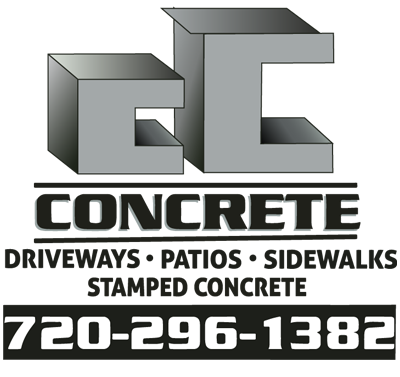

Troubleshooting common concrete issues is crucial for maintaining the structural integrity and longevity of concrete structures. Whether it’s a residential driveway, a commercial parking lot, or a large-scale infrastructure project, concrete problems can be costly and time-consuming to address if not handled promptly. This practical guide delves into the causes, symptoms, and solutions for various common concrete problems. We’ll explore various concrete issues such as cracking, spalling, efflorescence, and more, highlighting the importance of proper inspection, diagnosis, and repair strategies. This guide is structured to provide clear and actionable steps to help you understand, identify, and solve these issues effectively.
Identifying the Problem: A Visual Inspection
Initial Assessment:
Troubleshooting concrete issues often starts with a thorough visual inspection. Looking for signs of distress is critical. This initial assessment is the first step towards identifying the root cause of the problem. Begin by examining the concrete for any visible cracks, spalling, or discoloration. Pay attention to the location and pattern of these defects, as they can provide clues to the underlying cause.
Common Distress Indicators:
Common indicators include cracking, which can manifest as hairline fractures or wider fissures. The presence of spalling—the loss of concrete material from the surface—is another critical sign, often resulting from inadequate curing, freeze-thaw cycles, or other factors. Efflorescence, a white or colored powdery deposit, usually indicates salts in the concrete mixture that have come to the surface over time.
Understanding the Causes of Cracking
Water Damage:
Water plays a significant role in concrete deterioration. Water absorption, particularly during freeze-thaw cycles, can cause significant damage. Expansion and contraction due to moisture fluctuations can result in cracks. Poor waterproofing measures contribute to the problem. To mitigate water damage, consider employing effective drainage systems and sealing methods.
Inadequate Curing:
Insufficient curing often leads to early cracking. Concrete needs adequate time and conditions to harden fully. Inadequate curing can lead to structural issues and weaken the concrete, rendering it more susceptible to damage. Appropriate curing methods and timely implementation are crucial for strong and long-lasting concrete.
Poor Construction Practices:
Improper construction practices can also lead to significant cracking. Factors such as incorrect concrete mix design, inadequate reinforcement, or improper placement can cause stress concentration that eventually result in cracking. Adherence to industry standards and procedures are key to preventing issues.
Addressing Spalling and Efflorescence
Spalling Analysis:
Spalling can stem from a variety of factors. Understanding the cause is paramount for implementing the correct repair strategy. Exposure to harsh environmental conditions, such as freeze-thaw cycles and de-icing salts, is a leading contributor to spalling. Improper concrete mix design also plays a crucial part. Identifying the root cause often involves examining the concrete’s composition and the conditions it’s exposed to.
Efflorescence Solutions:
Efflorescence, while often not structurally damaging, can compromise the concrete’s aesthetic appeal. The solution lies in addressing the underlying issue—usually salt or mineral deposits. Identifying the source and applying effective cleaning methods are often sufficient. If the issue is extensive, a more comprehensive approach, such as specialized concrete treatments, may be necessary. A thorough analysis is crucial in these cases to avoid further damage.
Reinforcement and Repair Techniques
Reinforcement Analysis:
Reinforcement plays a critical role in structural concrete. Determining if reinforcement is adequate is key to identifying cracks. Often, cracks that emanate from the reinforcement indicate stress and structural problems. A thorough assessment involves identifying the type and quantity of reinforcement used and its alignment within the concrete structure. Proper reinforcement techniques and quality control throughout the construction phase are essential for avoiding issues later.
Repair Techniques:
Once the source of concrete problems is identified, the appropriate repair techniques can be selected. Many methods are available, including patching, crack injection, or full replacement. The choice depends on the severity of the damage and the specific concrete issue. The selection of repair techniques is a crucial aspect of maintaining the structural integrity of a concrete structure.
Prevention Through Proper Concrete Practices
Quality Control:
Implementing rigorous quality control measures from the initial design stage through the construction and curing phase is critical. This ensures consistency and optimizes the quality of the concrete product, substantially lowering the likelihood of long-term issues. Proper attention to details during every stage reduces potential issues and ensures a long-lasting concrete structure.
Maintenance Programs:
Having regular maintenance programs for concrete structures is critical. Early detection of distress and issues is key to minimizing problems. Regular inspections allow for the early identification and remediation of small issues, preventing larger-scale problems later. This preventive approach minimizes long-term maintenance costs and structural concerns.
In conclusion, troubleshooting common concrete issues requires a systematic approach, combining knowledge of concrete science, inspection techniques, and problem-solving methodologies. By understanding the underlying causes of cracking, spalling, or other defects, property owners and contractors can implement effective solutions. Remember, timely intervention is key to preventing further damage and ensuring the long-term structural integrity of concrete structures. For more in-depth guidance or personalized solutions for your specific concrete concerns, consider consulting with a qualified concrete specialist. Your concrete’s health is worth the investment!